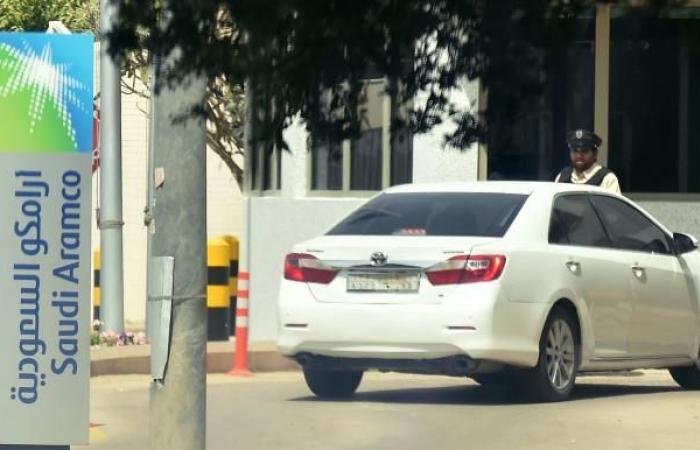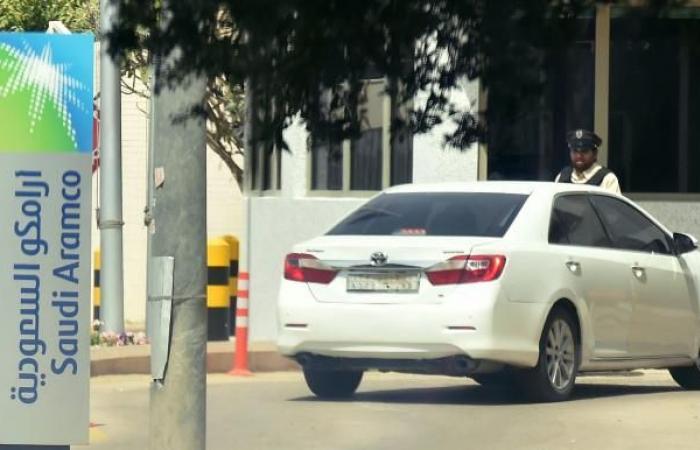The breakeven price between revenues and expenses in Saudi Arabia is about $ 80 a barrel (AFP)Sources in the OPEC + bloc said that Saudi Arabia and Russia have grown more confident that high oil prices will not lead to a quick response from the US shale oil industry, which reflects a desire to increase revenues and enhance justifications not to increase the bloc's production at a faster pace.
The two countries lead the OPEC+ group, which is made up of members of the Organization of the Petroleum Exporting Countries (OPEC) and their allies. The restriction of the bloc's production had supported an upward wave that pushed the price of Brent crude to $86.70 a barrel last month, its highest level in three years.
Indications that Riyadh and Moscow are waning about rising prices help explain why OPEC + rejected calls from the United States and other consuming countries to get rid of the production cuts decided last year during the worst phases of the pandemic at a faster pace.
A Russian source in the bloc said, "OPEC + keeps its eye on American oil production and reserves, and at the moment the alliance has no concerns in this regard... American shale oil production is recovering at a relatively modest pace."
Oil producers had experienced lower revenues during the pandemic, and higher prices had allowed them to make up for the shortfall in their balance sheets.
Before the pandemic, American shale oil companies were under pressure to cut spending and expansion projects and increase returns to their shareholders. These pressures limited its activity as oil prices rose to levels that had previously stimulated shale production.
This trend appears to have allayed the fears of OPEC +, that higher prices will lead to an increase in US shale oil production.
In many cases, Russia had previously expressed its fears that the failure to increase OPEC production to control prices would encourage more drilling in shale fields. OPEC + sources said that Russia has not shown any signs of concern of this kind recently.
Advertisements
price ambitions
“There is no doubt that the Saudis and the Russians have raised their price ambitions. They started the year with an unofficial target of $75 for Brent but are increasingly comfortable with the higher price,” said Gary Ross, chief executive of Black Gold Investors and a longtime follower of OPEC.
He added, “The reasons may be a combination of need, politics and the market’s ability to absorb this, as shale oil is a feature with a less dominant role that has discipline in relation to capital.”
OPEC’s expectations are based on no growth in US shale production in 2021 and a modest increase of about 400,000 barrels per day in 2022, although internal forecasts seen by “Reuters” indicate that the 2022 estimates will be revised upward.
Before the pandemic, American shale oil companies were under pressure to cut spending and expansion projects and increase returns for their shareholders
An OPEC + source said, “The issue of shale oil has not been raised for several months, neither at the level of ministers nor at the level of specialists.”
Investors had punished the American shale oil companies that tried to increase spending on drilling in the past two years, so the shares of companies that did not reduce the size of their budgets and target production stability fell.
Operating companies in the American shale sector have moved away from remote locations, where the investment cost is higher than the Permian geological basin, the largest centers of American shale production in Texas and New Mexico.
The basin’s production peaked in March 2020, reaching 4.91 million barrels per day, according to US Department of Energy figures, and is expected to reach 4.89 million barrels per day in November, 0.5 percent less than its peak.
By contrast, production from the rest of the US shale basins is expected to total 3.3 million barrels per day in November, down 27 percent from their peak in February 2020 of 4.5 million barrels per day.
In the recent past, rapid growth in shale oil supplies has been causing problems for OPEC.
OPEC+ is also expected to commit to an increase of 400,000 barrels per day.
The increase in shale oil production, encouraged by the policy of production cuts followed by OPEC to support prices, contributed to the ample supply in the markets during the period 2014-2016. That glut eventually led to the OPEC+ cartel, which began limiting production in 2017.
bullish wave
At its October 4th meeting, OPEC+ was under pressure from the US to do more to calm the market. The sources said that the bloc had two options to increase production, either 800,000 barrels per day or 400,000 barrels per day, as required by its plan.
The sources said that Saudi Arabia made it clear that it opposes an increase of more than 400,000 barrels per day, and did not object to Russia, which was calling earlier this year to increase production at a faster pace.
At the bloc’s latest meeting on Thursday, OPEC+ is also expected to commit to an increase of 400,000 barrels per day.
The sources say that Saudi Crown Prince Mohammed bin Salman, who drives oil policy in the kingdom, needs to fund initiatives such as the kingdom’s Vision 2030, which represents a plan for economic reform.
A Saudi source familiar with the thinking prevailing in the government said, “Mohammed bin Salman is a young crown prince, and he will be king for years to come, and therefore he needs relatively high oil prices to help him achieve his vision.”
The source spoke about the October 4th meeting and said: “He draws the general lines of Saudi Arabia’s policy with regard to oil and OPEC and gave instructions that it should be emphasized in the previous meeting that there will be no further increase.”
There is no official price target for OPEC+, Saudi Arabia and Russia. The Organization of the Petroleum Exporting Countries abandoned this a number of years ago, as impractical. As for the stated goal, the production policy should balance supply and demand.
Saudi Arabia is more dependent on higher oil prices than the other major countries in the OPEC+ bloc.
The International Monetary Fund estimates that the break-even rate between revenues and expenditures in Saudi Arabia is about $80 a barrel, higher than other major OPEC members such as Iraq and the UAE.
Russia, by contrast, has a breakeven price of about $40 a barrel.
Russia, which depends less on oil income than Saudi Arabia, has urged several times this year to increase production. In January, it reached a deal to increase its production while Saudi Arabia voluntarily reduced its production.
(Reuters)
These were the details of the news Saudi Arabia and Russia are more comfortable with the high oil... for this day. We hope that we have succeeded by giving you the full details and information. To follow all our news, you can subscribe to the alerts system or to one of our different systems to provide you with all that is new.
It is also worth noting that the original news has been published and is available at saudi24news and the editorial team at AlKhaleej Today has confirmed it and it has been modified, and it may have been completely transferred or quoted from it and you can read and follow this news from its main source.


